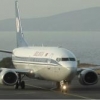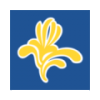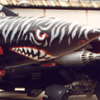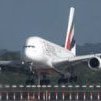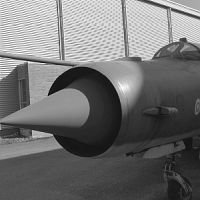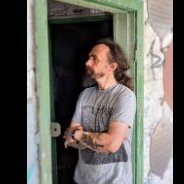Search the Community
Showing results for tags 'Special hobby'.
-
Sure hope that 'Cannon Fighter' box also gets upgraded.
- 7 replies
-
- 6
-

-

-
- Special Hobby
- Westland
-
(and 1 more)
Tagged with:
-
Here's my first entry. Something I've wanted to do for many years, is build a half decent kit of one of the Shepherds Grove Thunderstreaks. A base which is quite close geographically to me & the nearest base that had Thunderstreaks so it has to be this historically popular subject, 52-6675 of the 78th FBS 81st FBW. So this is it, the Microscale sheet which I really hope has survived & doesn't disintigrate into a million specs when I get to apply it. I've got a collection of Sword kits but will be starting off with the fantastic new Special Hobby kit.
- 24 replies
-
- 6
-

-
- Special Hobby
- 1/72
-
(and 1 more)
Tagged with:
-
I am excited for this GB! There are several subjects I may want to build as part of it, but first up will be a representative from my "Minor Gustavs" project, a 1/72 HA-1112 from Special Hobby. Should be able to build this OOB. The Minor Gustavs project involves modelling BF 109Gs (or their derivative versions, such as Spain's HA-1112) in service with the "smaller" air forces (i.e., not Germany or Italy). Some of these are minor Axis (e.g., Hungary) and others are post-war or neutral operators (e.g., Switzerland). Here are the first six Minor Gustavs I've built, representatives from Romania, Finland, Slovakia, Czechoslovakia, Yugoslavia, and Croatia. I think a nice blue HA-1112 will make a great addition!
- 21 replies
-
- 16
-

-
- 1/72
- Special Hobby
-
(and 1 more)
Tagged with:
-
This is my third entry for this Group Build. This time it's a hot pancake right from the Special Hobby molding machine - I literally received it last Sunday and it's immediately going to the workdesk completely bypassing my stash storage shelves!!! I think the kit is superfamiliar to all the F-84 amateurs. Some photoes of box contents are below: 4+1 sprues, projectiles, different tanks, two versions of tail, alternative parabrake fairing, three versions of ejection seats (early, intermediate AMI seat and MB seat - BTW I found out that there was an even earlier seat that was used on very first Thunderjets). Also the decal sheet here is huge with full decals to be used for those colourful stripes. I'm a little bit in doubt on its use - painting is probably safer (but longer) process especially on those curved surfaces like intake rim or fuselage stripes. Maybe I still should take a challenge. Another concern - it's definitely a new style Eduard decals with 'peeling lacquer off' effect. Again first time I'll be using such stuff. A little bit more scary! I'm still not fully decided which version to build. I collect IDF aircraft - but this not really an IDF aircraft... I definitely want Suez Crisis Streak - so the third option from the decal is definitely out of competition. Also Scheme A seems easier than B. Anyway it's going to be French Streak and I'll probably decide a bit later. Last point: spAcial hobby. That's on all the five sprues. I do not know what to do to be honest. Shall I write to Special Hobby to get replacement sprues? Anybody has plastic 'e' for replacement? The whole project is at risk!!! Two more evening before sprues cutting starts! Cheers, Dennis
- 39 replies
-
- 11
-

-

-
- F-84F
- Armée de lAir
-
(and 1 more)
Tagged with:
-
Special Hobby is not only working on a 1/72nd Dassault Super Mystère SMB2 kit (link) but also on a 1/48th one! Yesss. The subsidiary question is when as the SH kits development delays are often really slow. Source: http://www.britmodeller.com/forums/index.php?/topic/235011761-we-need-it-in-148th-the-smb2/&do=findComment&comment=2570698 V.P.
- 229 replies
-
- 3
-

-
- Super Mystère
- Special Hobby
-
(and 1 more)
Tagged with:
-
Special Hobby has just announced a new tool 1/48th Martin Baltimore Mk.I/II kit - ref. SH48160 Source: http://www.britmodeller.com/forums/index.php?/topic/235016099-novelties-from-special-hobby/ V.P.
- 34 replies
-
- 1
-

-
- Baltimore
- Special Hobby
-
(and 1 more)
Tagged with:
-
Special Hobby is to reissue soon its 1/72nd Heinkel He.59B kit (link) under ref. SH72428 Source: https://www.specialhobby.net/2023/11/sh48428-heinkel-he-59b-nahled-obtisku.html Box art & decals V.P.
-
Special Hobby working on SAAB VIGGEN scaled down to 1/72 metal mould made with 3D CAD-CAM CNC technology like Vampire, Gnat, Mirage etc.
- 108 replies
-
- 7
-

-
- Special Hobby
- Saab
-
(and 2 more)
Tagged with:
-
Hi all Been working on this one, the kit goes together very well and quickly too. I built mine OOB and was enjoying up to a loss of mojo when I had trouble getting the panel line wash to stick , my fault, I should have deepened the panel lines with a blade or Olfa cutter first, thanks to Stuart @Courageous for pointing out something I used to do , use a brush to clean away the excess and it worked well. The model was brush painted with Humbrol enamels, the parts of the codes in the bkack stripe area under the wings were a different colour yellow so painted over them with Humbrol 24. I am pleased with the overall look of this one. Thanks to those that commented and liked, the support and encouragement given is very much appreciated. Thanks for looking in Chris
-
P-40K-1/5 Warhawk ‘Short Fuselage’ (SH72379) 1:72 Special Hobby First flying before the outbreak of WWII, the Warhawk was a development of the P-36 Hawk, and although it was never the fastest fighter in the sky, it was a sturdy one that took part in the whole of WWII in American and Allied hands, with large numbers used by Soviet pilots in their battles on the Eastern front. The various marks garnered different names such as Tomahawk and Kittyhawk, so it can get a mite confusing if you're not familiar with the type. It was unable to keep pace with the supercharged Bf.109, but was used to great effect in the Far East and Africa, which may have assisted in the feeling that it was a second-string aircraft of inferior design, when this actually wasn't the case – certainly not to the extent inferred. It was robust, cheap to make, and easy to repair, although its high-altitude performance dropped off somewhat. The early marks were under-armed with just two .50 guns firing through the prop from the top of the engine cowling and a pair of .303s in the wings, but later models benefited from improved armament. The B model was a revision of the initial airframe with lessons learned from early production, self-sealing fuel tanks and armour in critical parts of the airframe, although this extra weight did have an impact on performance. The -D was a partial re-design, eliminating the nose guns, narrowing the fuselage and improving the cockpit layout and canopy. In British service it was known as the Kittyhawk Mk.I, but only a small number were made before the -E replaced it with a more powerful Allison engine, and an extra pair of .50cl machine guns in the wings bringing the total to six, but even that wasn’t sufficient to let it keep up with the opposition. It wasn't until the –F model that the Allison engine was replaced by a license-built Merlin that gave it better high-altitude performance and a sleeker chin. The -K was an Allison engine version with a shorter fuselage, retaining many of the earlier visual cues just to confuse us, known at the Kittyhawk Mk.III in British and Commonwealth service. The Kit This is a rebox of a recent tooling from Special Hobby with new parts to depict this variant, and it arrives in a red/white/grey themed top-opening box with a painting of the subject after a successful engagement with a late mark Bf.109, which is banking away whilst trailing smoke from its engine. Inside the box are three sprues in grey styrene, a clear sprue that’s separately bagged, a tiny bag of two grey resin parts, a wide decal sheet, and the A5 portrait instruction booklet printed on glossy paper in colour. Detail is good, with finely engraved panel lines, raised and recessed details around the airframe and a few spare parts that can stay on the sprues, which are marked with a red X on the sprue diagram. Construction begins with the pilot’s seat, mounting it on a frame, then it is attached to the bulkhead and given a set of four-point decal seatbelts, after which it is set aside for a few steps. The fuselage sides are fitted with sidewall inserts, with sections further forward painted silver as they form part of the air intake pathway, adding the core with three circular intakes inside, and the intake lip in front once the fuselage halves are together. The rear bulkhead with seat and the instrument panel with two decals for the dials are trapped between the two halves of the fuselage as it is closed. A small circular shape on the cockpit side is removed and smoothed over at this stage too. Moving on to the wings, the full-span lower has the perimeter around the bay openings painted, as are the side-walls that are glued in the recesses, and the roof that is moulded into the upper wing half, adding a landing light under the port wing from within. The cockpit floor is moulded into the centre of the upper wing, and that is also painted the same colour, so quite convenient while you have the paint out. The control column and another lever are inserted into the floor, then the wings can be joined to the fuselage, taking care not to knock the stick off as you do so. The elevators are each a single part that affix with the usual slot and tab method, with a separate rudder that can be posed deflected if you wish. The exhaust stubs are supplied as inserts with one per side, and are far too small to drill out unless you have the world’s steadiest hands. The last option involves selecting open or closed cooling gills behind the radiator housing, inserting a pitot probe in the port wingtip, and painting the moulded-in lights on each tip above and below the wing. The main gear struts have an additional bracing leg fixed at the top, then the tripod arrangements are inserted into the sockets in the bay, adding the two doors to each side of the bays, and another two that are linked by a cross-brace in the tail bay and a single part strut/wheel to complete the undercarriage. The three-bladed propeller is moulded as a single part that is trapped between a back-plate and spinner, with a short spindle on the back that slides into the hole in the front of the fuselage. You then have a choice of two loads under the centre of the fuselage, consisting of a fuel tank, or a bomb for ground-attack operations. Each option is made from two halves plus four braces for the fuel tanks, and two for the bomb. Flipping the model over allows the last step to be completed, fitting the coaming and gunsight into the cockpit, adding the windscreen with rear-view mirror, and the two side windows into the scalloped sections behind the canopy, followed by the sliding canopy, which can be posed open or closed as you like it by using a different part for each option. One decal option has a two-part resin D/F loop aerial and fairing added to the spine behind the cockpit, with its location shown during step 6 of the instructions. Markings There are four options available on the decal sheet, three US options having bright personalisations around the nose area, while the other option is a Lend/Lease airframe in Soviet service, replete with red stars. From the box you can build one of the following: P-40K-1 (42-46040) White #13, Pilot 1st Lt. Robert Johnson ‘Jay’ Overcash, 643FS, 57FG, Based at Hani Main, Tunisia, May 1943 P-40K White #23, Lt. Nikolai Federovich Kuznetsov, 436 Fighter Aviation Regiment, 239 IAD, 6 Air Army, Lake Seliger, North Western Front, Winter 1943 P-40K-5 (42-9768) White #255, Maj. Edward ‘Big Ed’ M Nollmeyer, CO of 26FS, 51FG, Kunming, China, December 1943 P-40K, White #15, 25FS, 51FG, Assam Valley, India 1944 The decals are printed using a digital process and have good registration, sharpness, and colour density, with a thin gloss carrier film cut loosely around the printed areas. This means that the carrier film on their decals can be coaxed away from the printed part of the decal after they have been applied, effectively rendering them carrier film free, making the completed decals much thinner and more realistic, and obviating the need to apply successive coats of clear varnish to hide the edges of the carrier film. It’s a great step further in realism from my point of view, and saves a good quantity of precious modelling time into the bargain. Conclusion The P-40 is an interesting and oft overlooked aircraft that played some important roles in WWII, as evidenced by the number of notable pilots that gained their reputation in this doughty fighter. This is a well-detailed kit of a later variant, and has some interesting decal options that make it an appealing prospect. Highly recommended. Review sample courtesy of
-
Sd.Kfz.10 Zugkraftwagen 1t ‘Demag D7’ (SA72021) 1:72 Special Armour by Special Hobby In the decade before WWII, Germany was rearming - secretly at first - but overtly once they had publicly thrown off the constraints of the Versailles Treaty. In order to mechanise their military, many different vehicles were required, from large to small, with the Sd.Kfz.10 being at the smallest end. It was based on a hull rather than a ladder chassis, which gave it a low profile similar to that of a standard truck, despite it having a half-track running gear and a pair of steerable wheels at the front. It was powered by a 6L petrol engine from Maybach, and was intended to transport up to eight troops and tow smaller artillery pieces, which it did throughout the war, although production ceased before the end, despite a few attempts to re-vitalise the design. In its production form, the D7, it was capable of 40mph on road, although one of its main users, the Luftwaffe, limited it to 19mph to preserve the rubber trackpads, even though it was happy to cruise at a shade under 30mph. It had seven forward gears and three reverse, with a clever steering mechanism braking one or other track when larger steering inputs were made. It was demonstrated in 1938 and had entered service by the beginning of hostilities, with some further minor upgrades adding to its robustness and the added ability to tow heavier loads to increase its usefulness to the military. Toward the end of the war, proposals were made for an improved variant, but nothing came of it other than a few prototypes of one design, and drawings of another. The Kit This is another reboxing of the amended tooling that originated in 2011, but don’t let that dissuade you – it’s a modern tooling with lots of detail throughout. It arrives in a small end-opening box, with two grey sprues, decal sheet and A5 instruction booklet, printed in colour. The smaller sprue covers the revised idler wheels, drive sprockets, and more detailed tracks, which are an improvement over the originals that are still on the larger sprue, although the new tracks have some recessed ejector-pin marks on the inner face. Construction begins with creation of the track runs, which are based on a beam with axles moulded-in, onto which you slide the sets of wheels that are moulded in linked units for the two rear layers, and individually for the three outer wheels, plus the new two-part drive sprockets. The track on each side is moulded as a single run, and is wrapped around the wheels carefully, cutting off any spare links, then gluing the run in place. Take care when bending the parts, and warm them up a little to assist with flexibility. This is done twice as you’d imagine, and the completed runs are glued to the sides of the hull, with the crew area placed over the top, and firewall with windscreen frame moulded-in at the front of the area. There's a substantial sink mark below the windscreen, but this doesn't matter as it will end its days under the hood. You will need to provide your own windscreen from clear acetate, a piece of packaging material or even the front of a clear vacformed clamshell package, but they have included a template to assist you in this. It seems a little churlish not to include a slip of acetate sheet, but there you go. The bonnet/hood is fitted in front of the windscreen, with a nicely detailed radiator attached to the front. The front wheels are each two parts, and have a deeply dished hub moulded-in, as well as tread for the tyres. The axle is supported by a single lateral leaf-spring, steering arms and anti-roll bar that are put together and inserted into the wheel arch, with additional rods fitted afterward, their location shown from another angle in a scrap diagram. Number plate, towing eye, pioneer tools, width-marker lollipops and headlights are all clustered around the front, and inside the crew cab the driver controls, wheel and two seats are fitted, with a decal provided for the instrument panel. In the rear, bench seats, fenders, spare fuel cans and stowage boxes are assembled and attached, with the rear number plate and Notek convoy light at the back over a pair of mudflaps, and length of cable on a circular frame fixed on the back of the vehicle on three pegs, two of which are moulded-in. Markings There are four decal options on the sheet, which consists mostly of number plates, white stencils and the aforementioned instrument panel decal. From the box you can build one of the following: Sd.Kfz.10, unknown combat unit, Wehrmacht, Russia 1942 Sd.Kfz.10, Adler-built vehicle, unknown unit, Wehrmacht, Poland 1939 Sd.Kfz.10, Demag-built vehicle, unknown unit, Wehrmacht, Yugoslavia, summer 1942 Sd.Kfz.10, unknown combat unit, Wehrmacht, Czechoslovakia, May 1945 The decals are printed using a digital process and have good registration, sharpness, and colour density, with a thin gloss carrier film cut loosely around the printed areas. This means that the carrier film on their decals can be coaxed away from the printed part of the decal after they have been applied, effectively rendering them carrier film free, making the completed decals much thinner and more realistic, and obviating the need to apply successive coats of clear varnish to hide the edges of the carrier film. It’s a great step further in realism from my point of view, and saves a good quantity of precious modelling time into the bargain. Conclusion A welcome re-release of a lesser-known half-track from the early war, with a variety of camouflage options that should suit most folks. Highly recommended. Review sample courtesy of
-
Well, here's my Cunning Plan! I already gave a sneak preview in the STGB chat,: which have since then been joined by a couple of saucy Special Hobby Streaks. I plan to build four Koninklijke Luchtmacht models (yay, ambition!): - Fighter bomber F-84E (Academy) - Recce F-84G (Academy with ModelArt resin) - Strike F-84F (Special Hobby) - RF-84F (Sword) EDIT: now with added Heller 1/72nd F-84G! Game on, sirs and madams. Game on. Cheers, Andre
- 16 replies
-
- 12
-

-
- Sword
- Special Hobby
-
(and 1 more)
Tagged with:
-
Sd.Kfz.250/1 Ausf.B – Neue Ausführung (SA72005) 1:72 Special Armour by Special Hobby The Sd.kfz 250 was a light armoured halftrack similar in appearance to the Hanomag Sd.Kfz.251/1. Both were a mainstay of the German armoured Personnel Carrier fleet, but were flexible enough to also take up many other tasks. With two steerable wheels at the front, the rear was carried on tracks, giving it good clearance and rough ground capabilities that a truck simply could not manage once the going got tough. It was armoured sufficiently to deflect non-armour piercing rounds from small arms fire, but with an open top it was susceptible to both grenades and plunging fire, where the armour would concentrate the blast inside to the detriment of the occupants. Almost 6,000 examples were produced between 1940 and the end of WWII, and the vehicle was in service in time for the invasion of France, serving in most theatres in which the Wehrmacht fought to the bitter end. Fifteen official variants were produced, including ammunition carriers to support StuG batteries and signals cars that were equipped with radio sets. Other variants were equipped with heavy weapons that enabled them to provide infantry support. As a testament to their versatility, usefulness and durability, the type was sometimes reused when captured by Allied forces and insurgents taking back their homeland toward the end of the war, and they were kept in service for some period afterward where needs required. The Kit This is a reboxing of a kit that was originally released under the Mk.72 label, tooled for them by Special Hobby in 2013, although many new parts have been added to the series over the years, as can be seen by the differing style and colour of one of the sprues. The kit arrives in a figure-sized end-opening box that has a painting of the subject on the front, and the three decal options printed on the rear. Inside are four sprues in two shades of grey styrene, a sheet of decals, and the instruction booklet, printed in colour on glossy paper in A5 format. Bizarrely, the box states that PE and resin parts are included in the kit, which isn’t the case as confirmed both by contents and the sprue diagrams, so we removed the text from the box art. Construction begins with the lower hull, which is made up into a shallow dish from three sections so that the road wheels for the tracked portion of the vehicle can be interleaved behind the drive sprockets, which are both made from two parts each. The tracks are found on the sand-coloured sprue, and are shortened by five links to fit the chassis, as shown in the accompanying scrap diagram, and here a little heat judiciously applied might be beneficial to help the styrene wrap around the sprockets at the ends. The front wheels are each made from two halves, and these are fixed to the steering axle that is made up from six parts, with a wheel on each end. The crew compartments are made up next, starting with the driver’s compartment, which has much of the detail moulded into the floor, plus a dashboard with steering column and wheel, joined by two seat backs, control levers and two stowage boxes. The rear compartment is tread-plated in the lowest areas, and fixes to the back of the drivers’ section, with an additional seat, and a two-door cabinet at the rear, plus a stack of double drum mags for the machine gun behind the chair. The sloping centre sections of the body sides are glued in place on the lower hull after the interior is installed, adding a pair of towing hooks at the front, and the fenders with stowage boxes moulded into the surface, adding a stowage box in the space between the wheels on one side, and a barrel-shaped exhaust in the other. The upper hull is moulded as a single part, and is fixed on top of the centre section along with the rear bulkhead and a fold-down platform that stows near vertically in the left side, adding a fire extinguisher and more ammo toward the rear. The front armoured radiator cover, and crew compartment vision slots are fixed to the front, and a door, towing hitch, and two jerry cans in racks are added to the rear to complete most of the structural work. A mounting plate with an MG34 on pintle mount and a splinter shield are made and fixed to the front of the passenger compartment, adding another on a pivot at the rear of the compartment, then racking four Kar.98s on the sloped right side of the interior. A pair of wire cutters and an axe are fitted to the front arches, adding some slightly oversized width-indicator ‘lollipops’ to the corners of the wings and a convoy light to finish the build. If you’re a detail hound, we reviewed resin sets for the wheels and tracks some time ago that you can see here. Markings There are three choices on the small decal sheet, in service in various parts of the European theatre. From the box you can build one of the following: Sd.Kfz 250 Ausf. B (Neu), WH-1651812, Panzeraufklärung Abteilung 70, 4. Kavalerie Division. At the end of the war the vehicle was found in Mörtelsdorf, Austria, put out of service Sd.Kf 250 Aus. B (Neu), 388, WH-1629146, 3. Grenadier Kompanie, Panzer Grenadier Division Grossdeutschland, Lithuania 1944 Sd. Kfz 250 Ausf. B (Neu), 339, SS-900915, 3./SS-Pz. Aufkl. Abt. 11 - 11.SS Panzergrenadier Division Nordland (Schwedenzug - Swedish volunteers platoon), Berlin, May 1945. The vehicle was destroyed on the corner of Friedrichstrasse and Reinhardtstrasse on 2 May 1945. The crew including a Swedish female nurse volunteer were killed The decals are printed using a digital process and have good registration, sharpness, and colour density, with a thin gloss carrier film cut loosely around the printed areas. This means that the carrier film on their decals can be coaxed away from the printed part of the decal after they have been applied, effectively rendering them carrier film free, making the completed decals much thinner and more realistic, and obviating the need to apply successive coats of clear varnish to hide the edges of the carrier film. It’s a great step further in realism from my point of view, and saves a good quantity of precious modelling time into the bargain. Conclusion Another well-detailed Sd.Kfz.250 to add to the roster in 1:72, broadening the range, and adding some more esoteric decal options with a story behind them, as detailed in the accompanying text. Highly recommended. Review sample courtesy of
-
Hello all, here is my latest completed model. It is the Special Hobby Firefly converted to a U Mk.9 target drone. This aircraft was built as an FR Mk.5 in 1950 and converted to a drone at Ringway in 1955. It ended its days at Hal Far in August 1960, crashing on landing after escaping being shot down by a Royal Navy destroyer! The base kit is the SH Firefly Mk.V “foreign service” boxing. I scratch built the various drone addons including the wingtip pods which were made from Su-27 ECM pods! The rear cockpit was rebuilt based on plans provided by @CJP to whom I am extremely grateful. The paints used were mostly Mr Hobby, the decals came from the spares box and the final finish was VMS’ excellent satin varnish. There are a few inaccuracies, mainly the fonts for the various code numbers and letters aren’t 100%. The elevators are the wrong early style provided in the kit, but the time I found out it was too late to make the change without serious rework. The wingtip pods need a few more details adding but this will come in due time as I get round to it. As it stands it makes a different addition to the shelf and certainly stands out amongst its contemporaries! Chris
-
SS-100 Gigant Update sets (P48010 & 8068 for Tamiya) 1:48 CMK by Special Hobby The Hanomag Gigant was a German WWII prime-mover that was originally a pre-war civilian tractor that was impressed into military service to tow aircraft, Vidalwagen V-2 rocket launch transport units, and Meillerwagen V-2 erector systems. Tamiya released their 1:48 kit in 2017 as an aircraft tug, and re-released it in 2019 towing an 88mm flak 37. These sets are intended to upgrade the detail on these kits, addressing the slightly simplified hollow tyres, and adding extra detail to the prominent radiator at the front of the vehicle. As usual with CMK and Special Hobby's resin sets, they arrive in the familiar clear vacformed box, with the resin parts safely inside, and the instructions sandwiched between the header card at the rear. Front Radiator Mask (P48010) The name of this set is slightly misleading, but it supplies a new radiator grille and the core behind it, both 3D printed in orange resin and consisting of two parts on a single print base. The two parts are liberated from the base and are glued together, inserting the radiator core behind the grille after painting, and removing the raised nose section of the kit’s bodyshell to fit the new assembly, which locks in place thanks to a block on the rear of the radiator core. It should massively increase the realism of the area, as the individual grille louvres are printed separately, so the radiator behind it will be visible in good light. The grille also has the word Hanomag in raised letters above it, and a filler cap on the top. Wheels (8068) This set replaces the kit wheels that are a little simple, particularly in the rear twin-wheel axles, which have hollow inner sides. The single front wheels are drop-in replacements for the one-part kit wheels, giving much more finesse to the detail, while the rear wheels are mounted in pairs, correctly rendered with both sides of the tyres, and the particular hubs that permit their mounting in tandem, as per the real thing. A separate hub part is also included for each part. The spare tyres is moulded with a larger cut-out in the centre along that is flashed over on the casting block plus bolt-holes around the circumference, and comes with a pair of clamps that attach it to the rear wall of the double cab of the vehicle. Review sample courtesy of
-
Clear Box (100-Box01) Special Hobby Storing your models can be just a case of putting the finished work on shelves in a cabinet or on an open shelf, but that leaves them open to damage by incautious hands/paws, and of course, the dreaded dust. Dust has a habit of resolving itself over time into a self-adhesive layer that’s best not thought too deeply about, in case we realise what it consists of. Display cases are usually some combination of quite expensive, heavy or not of the required size, so it’s hard to find one to fit your modelling output. This new clear-topped display box is about to change that, particularly for 1:72 or smaller armour builders, or anyone that needs a display box with 5cm of headroom, measuring 13.4cm x 7.7cm at the base, internally, tapering to 12.8cm x 7.6cm at the top of the box interior. It has a clear upper of course, or you wouldn’t see much, and a black plastic base onto which the top fits neatly, although not tightly. If you grip the clear upper, it will come away without effort from the base, so to keep the atmosphere out, you’d need to glue/seal the two halves together with an adhesive that won’t mar either component. The black base has a lip at the bottom on which the top rests, and a bevelled edge around it that extends diagonally 8mm into the base. This gives 12.1cm x 6.5cm of useable flat space on the base, which is ideal for 1:72 armour, 1:43 vehicles and other such reasonably-sized models. The box arrives in a clear shrink-wrap film, with a sticker on top telling you what it is, and in the process it protects the case from scratch damage in transit. There is nothing stopping you from adding ground works to the base, the diagonal section adding a separation between your diorama/vignette and the clear sides. You must ensure that you don’t use any solvent-based adhesives or putties to create your masterpiece however, for fear of melting the base, and you should also ensure that all paints, glues and potions have fully cured before you drop the lid on your model for eternity, as it’s possible that off-gassing could result in partial melting, or frosting of the clear top, ruining your case. That’s for you to look out for however, as most cases are plastic, and the same rules apply unless you can afford glass cases. Conclusion A simple, effective and cost-conscious way to protect your creations from dust and ill-advised touching from fingers or paws. Fingers crossed that some larger boxes will arrive in due course. Highly recommended. Review sample courtesy of
-
MPM Special Hobby is working on new 1/48th Piper J-3 and Piper L-4 Cub injected kits. Sources: http://www.cmkkits.com/index.php?cmd=show&imageID=75599&title= http://www.britmodeller.com/forums/index.php?/topic/234934400-piper-cub-148/ V.P.
- 38 replies
-
- 1
-

-
- Grasshopper
- Special Hobby
-
(and 1 more)
Tagged with:
-
Hi All, My third completion for 2024 is SH's Barracuda, finished as LS503 of 815 Sqn FAA, flying from HMS Indomitable in August 1944. Although I have not been able to find a photo of LS403 here is a Barracuda from Indomitable from around the same time: The build was OOB - here is the WIP if anybody is interested: And on with the photos: I couldn't resist a couple of companion shots, both with 3-crew FAA brethren: And one with a stable-mate: I have to say I've really enjoyed this build, and it's nice to have a Barracuda in the collection. Thanks to all of those who have added kind words and encouragement along the way - it has been much appreciated! Thanks for looking, Roger
- 48 replies
-
- 92
-

-

-
- Special Hobby
- FAA
-
(and 1 more)
Tagged with:
-

Special Hobby 3D Printed WWII Small Arms (P35026//7/8/9) 1:35
Mike posted a topic in Diorama & Accessory
3D Printed WWII Small Arms (P35026//7/8/9) 1:35 Special Hobby 3D Print Guns are a central component in any military engagement. They’re everywhere, especially where there’s fighting. Special Hobby have taken to printing many of their upgrade and detail sets in attractive orange resin, and the detail is phenomenal. They’re bringing out a series of small arms sets as part of their range, for use in dioramas, to increase the detail of figures, or as personal items in or around AFVs and softskins. Each set arrives in a clear bubble pack with a cardboard header and instruction sheet at the rear. In many packs, the 3D printed parts are secured in foam inserts that are cut to suit their shape, although some don’t need this assistance. This collection of sets is spread over different combatants during WWII, and should be chosen for their suitability to the models you are making, not just because they look great, although it is tempting. Vickers Machine Gun WWII (P35026) The Vickers Machine Gun was a development of the original Maxim, the company Vickers had bought in the late 1800s, lightened and with an inverted breech to improve operation, which entered into British service at the outbreak of WWI in insufficient numbers due partly to the price being asked for each one, which was soon rectified by accusations of profiteering that led to a huge price cut per unit. It was used first by the infantry, then by the newly formed Machine Gun Corps when the lighter Lewis gun arrived on the scene, and remained in service throughout WWI and WWII, until it was finally replaced by the General-Purpose Machine Gun in the late 60s. Quite a service run. This set is supplied on a single print base with a printed cage over the top that protects the parts, but makes photography difficult, so it was nipped off beforehand. The parts are closely spaced, with a total of nineteen 3D printed parts in their signature orange resin. There are three barrel choices on the block, one un-jacketed, the other two with a different jacket, one having a different style of muzzle too. Your chosen barrel is glued to the breech, which has a sighting mechanism added to the top rear, then the tripod is built from a core and three individual legs, mating the two main assemblies by making the gun’s mount from three separate parts that fit in the top of the tripod. The gun is lowered into position, and you can then string a length of ammunition between the breech and a choice of two styles of ammo box, each one having open and closed box choices. Finally, you will need to source a short length of wire to pose as the water feed for the cooling jacket, which ends in a re-purposed Shell Motor Spirit can that has those exact words engraved on the sides. PPSh-41 Soviet Submachine Gun (P35027) The PPSh was a Soviet era submachine gun that was used extensively by their troops through WWII. It was cheap to produce, with a high rate of fire, a choice of stick or plate magazine, totalling over 6 million made, some of which found their way into German hands, as it was a weapon they coveted, as long as they could find ammo, triggering a project to convert the gun to German standard cartridge size as the MP41(r). This set provides three individual PPSh-41s, two with a moulded-in stick mag, while the third gun has a drum magazine as a separate part on the print base. The detail is exceptional, extending to tiny aspects of the weapon, and the stamped heat shield around the barrel. Again, a protective shroud is printed around the parts, and was nipped off before photography. You can see it to one side in the photo. Type 92 Japanese Heavy Machine Gun (P35028) The Type 92 was related to an early Hotchkiss machine gun design that was initially license built by Japan, with a family resemblance to the lighter Type 3, but chambering a 7.7mm round for improved hitting power and greater reliability. It was air-cooled and was fed by strips of ammunition, which proved to be an inefficient method, resulting in relatively short bursts at a low rate of fire, followed by silence during changing of the strip, which allowed their enemies to make progress closer to their positions. The US troops nicknamed it the ‘Woodpecker’ because of this. Arriving on three separate print bases, there are nineteen parts that includes ammo strips and boxes to pose near your model, and a choice of straight and flared muzzle styles. Brace yourself here though, as the resin is boring, ordinary grey. Hopefully, they’ll go back to the orange, as I prefer it because it is unusual, and combines strength and flexibility. The gun is made from four parts plus a flared or straight muzzle, adding a strip of ammo if you want to portray it as ready to fire. The low-slung tripod is a single part that is detailed with an adjustment wheel and locking lever before the two assemblies are joined. There are two boxed ammo strips, an unboxed strip and two large boxes of ammo, one with the lid removed to pose nearby. Additionally, three extra parts are included to build the gun in transport mode, with a U-shaped handle fitted to the long leg of the tripod, and two straight rods fixed to the other two, which allows between two and four soldiers to carry the weapon between them. Type 3 Japanese Heavy Machine Gun (P35029) If this set looks similar to the Type 92, that’s because the Type 92 is a scaled-up, larger calibre version of this gun. It fires 6.5mm rounds that are fed in strips like its larger compatriot with all the same foibles, and is also based upon an early Hotchkiss design. It shares most of its parts with its sibling, with only the breech slightly different, and no sighting equipment near the rear of the weapon, just iron sights. It builds in an otherwise identical manner, and includes the same transport equipment to allow easy carriage by troops. Conclusion These weapons are perfect for use as background equipment in AFV models or dioramas, and would fulfil that role whether crewed or otherwise. The detail is stunning, and with sympathetic painting, they will be the pinnacle of realism. Review sample courtesy of -
I have the Sword Thunderstreak kit too but in general the SH one looks more high quality straight from the box - so I think I'm gonna start with that. I did a quick side by side and the Sword kit seems slightly smaller - it's a bit shorter but then again the tailpipe section is thicker. Can't really say which one is correct though. But anyway, let's start with Special Hobby. Amazing cover artwork BTW! Nice pile of plastic. Details seem really nice too. And while the SH kit decals seem amazing - gotta love the colourful US birds - but I'm still drawn towards the Sword options. So this is the decal sheet for a Sword Thunderstreak and I'm gonna kick things off with a Dutch Thunderstreak. This is from the Sword kits manual. But I'm also thinking about getting Dutch Decal sheet, would give me more options. https://www.dutchdecal.nl/publications
- 20 replies
-
- 11
-

-

-
- Special Hobby
- 1/72
-
(and 1 more)
Tagged with:
-
I’ve been drooling over this new one from Special Hobby even in its 1:72 scale form, and I’ve literally just posted the review of it this avo here, plus the masks that you can get to cover up the canopy during painting. It’s always a danger to pull parts off the sprues to tape it up, mainly because it sometimes leads to reaching for tools, and we all know that often results in the dreaded… MODELLING! This is one of Special Hobby’s shorter-run kits, and isn’t going to be a shake-and-bake wünderkit that falls together by any stretch of the imagination, but that’s not why we’re here. There’s a little roughness here and there around the seamlines where the parts join together, and the fact that it includes resin detail parts is an indication that it has been tooled this way, as not everyone will be interested in this little racer. Me? I’m interested I started mucking about with the fuselage halves, and soon began putting cockpit parts together. It’s not your average cockpit due to its custom racer ethos, and there was a modicum of confusion in my mind about where to put the two fairings that cover up the drive shafts that pass through the cockpit area, which was resolved by test-fitting the rear bulkhead so you know where to butt the rear of the tubes, as the slight step in the rear that corresponds with the interior of the wing root fairing, and it’s better to be safe than sorry. Once the parts were cleaned up, it went together well enough, although you will need to place the support under the seat/floor part as a bit of a leap of faith after enlarging the notch a little to ensure it will fit. I used liquid cement to give me wiggle room and that did the trick. I also assembled the 2-into-1 gearbox at the front that converts the two input shafts into two concentric prop-shafts, and managed to partially sand away a box-shape on the top, so replaced it with styrene stock. Oopsie! This helped me get everything lined up in my head, and to guess where I needed to make any adjustments. Only the tip of the port fuselage had a slight missing bit right near the join-line, so I built that up with styrene and sanded it to shape. I’ve also been fiddling with the wings and the tail, tidying them all up first, then checking where any alterations are needed. I scraped the trailing edge of the wings, and thinned out the openings to the gear bays to give them a more realistic look, but I overdid it and need to put some small quantities of Milliput into the undercuts, and smack my own wrists for getting carried away I’m going to use Milliput for the easy clean-up to minimise any post-cure sanding that would be difficult due to the location of it, not to mention irritating, even with some fancy narrow sanding tools at my disposal. The tail was a similar proposition, needing a little fettling, and the addition of the resin pen-nib fairing at the rear. It needed some test-fitting and sanding/slicing, and the bottom portion of the fillet was slightly lop-sided at the bottom, so I added a bit of sheet styrene to it and trimmed it to profile, then slimmed it down until it fitted better. I also decided to move the tail assembly back by half a mil, so the fairing and the rudder trailing edges matched better, and while I was there, to get it to fit more snugly, I trimmed a few swipes of a sanding stick off here and there so I got maximum contact surfaces too. I’ve prepped two of the three grill combs that slide into the slots in the leading edges of the tail, and they’re possibly the hardest parts to prepare due to how close together they are. I have a set of stainless-steel sanding tools from Galaxy Tools, but they’re a bit thick at 1.4mm, but the smaller DSPIAE ones are only 0.5mm thick, even with one layer of self-adhesive sandpaper attached. I used one of those plus a #11 blade to even up the two halves of the moulds and smooth them out, then gave them a quick coat of liquid glue to get rid of any swarf. Two down, one to go That canopy is really nice! Can you see the wiring on the IP? I figured that I would be able to paint the cockpit with much of it in situ, so trapped the seat assembly in position between the two halves under the drive shaft fairings, leaving the bulkhead and instrument panel as a separate assembly after wiring up some of the dials at the back with some lead wire and fitting it to the coaming for a third assembly. The gearbox and front bulkhead are similarly loose so I can paint it better, and I think the front bulkhead will need slimming at the front because it projects forward from the fuselage a little. The inner face has some nice strengthening detail on it, so I’ll make sure that doesn’t get mashed in the process. Moving forward, I noticed there were some fairly big seams running down the props, so decided to put the contra-prop together while I was getting everywhere dusty. Each prop is separate, and there are two per boss, fixing into a cylindrical slot with a peg making sure you get the alignment of the blades correct. The moulding seams were actually quite easy to remove, complicated only by their small size, but I soon had them done, taking care to put the right pair on the right hub. As usual there was a bit of fettling needed to get everything fitting nicely, but once they were, they were rather nice and dainty. I reamed out the axle holes to get them on the prop shaft and test fitted them, which was when I found that the bulkhead sticks out a bit too far. That’s easily knocked back with a sanding stick though, which I’ll get round to later. With the cockpit basics in place, I elected to close up the fuselage, which I did with super glue (CA). It’s not the standard method for plastic kits, but I wanted the joints to be strong, and as there’s going to be a bit of sanding of seams to get a smooth surface, I also wanted it to be available to work on soon after gluing. Most of the gluing could be done from the inside thanks to the lack of wings at this point, so I started under the cockpit floor, then worked back along the top of the fuselage spine, all of which can be done from within, topping up with CA applied from outside by running a gluey old blade along the seam. With the seam glued, I immediately sanded them back roughly, and will sort them properly later on after a bit of primer gets sent their way. I’ll probably give the canopy a dunk in the Klear tank to increase the clarity even further, then mask it with the masks I also reviewed this afternoon here. Catch you next time
-
Hi All, I had almost convinced myself that at 74 years old 1/72 models were too small for tired eyes then along comes Special Hobby with this little gem an aircraft I have wanted to model for many years in fact I have the C scale conversion from many years ago squirreled away in a safe place! The kit is beautifully engraved and has amazing cockpit detail as well as wheel bays. It does need very careful assembly and there are small amounts of flash and mould lines to remove. I found the engine bulkheads needed their diameters reduced before the wings would close up flush but generally the parts fit was very good. Painted in a mix of Tamiya acrylics and Revell Aqua then for the first time I used an AK panel line wash, The decals are very thin and settled down well but they need to be treated with care or they can fold over on themselves. Very pleased with the end result so maybe I can dig some more 1/72 kits out of the pile what do you think?
-
Here is my General Aircraft ST-25 Monospar 1/72 Special Hobby. This plane was in Estonian service. ES-AXY "Vahur", in the service of the Ministry of Transport and Communications. Markings is paint using masks which is cut with a vinyl cutter.
-
Special Hobby is to release a family of Allison engined 1/72nd Curtiss P-40 Warhawk kits from P-40E to N. Source: http://www.specialhobby.net/2017/02/info-z-norimberku-no2.html V.P.
- 203 replies
-
- 14
-

-
- Warhawk
- Special Hobby
-
(and 1 more)
Tagged with:
-
Hi All, My next project will be Special Hobby's N-3PB. This aircraft was purchased off the drawing board (24 in total) by the Norwegian government in 1940, just before the fall of that country. On delivery these aircraft were operated from Iceland by 330 Sqn RAF, made up exclusively of exiled Norwegian aircrew. This squadron flew from 1941, performing maritime patrol and anti-submarine missions until they were replaced by the far more capable Sunderland. This will be my first floatplane build, although I have built a couple of seaplanes (namely the Sunderland and Walrus). Here's the box art: I believe this was a new tool kit in 2015, and the sprue shots show a nice level of detail: Floatage: And the small transparency sprue: Not sure if I have the testicular fortitude to separate those canopy elements! The decals look nicely in register, along with a small PE fret (I think those are the rudders): At this stage I'm planning to complete as this aircraft GS*G: Very evocative photos showing the operating conditions! I may have to do a bit of wear and tear on this airframe to reflect the harsh life. Anyway, off we jolly well trot! Thanks for looking, Roger
- 59 replies
-
- 20
-

-
- Special Hobby
- RAF
-
(and 1 more)
Tagged with:



